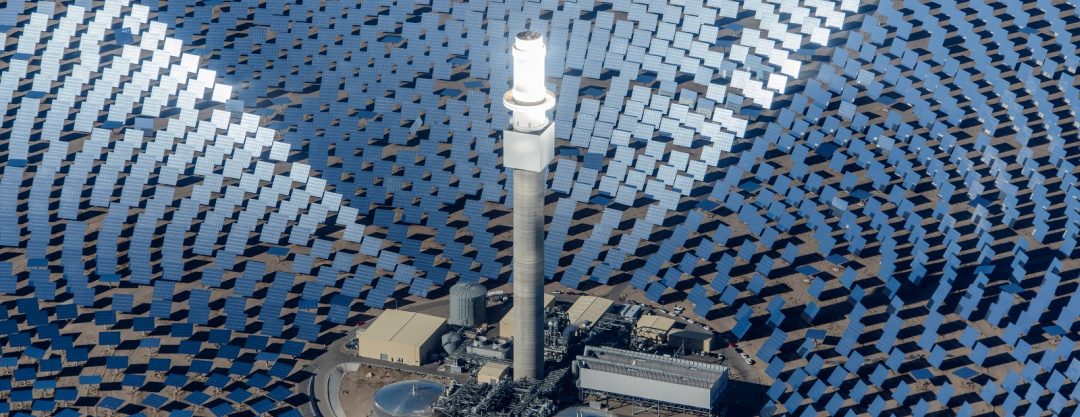By their very nature, sunlight and wind, as renewable sources of energy, fluctuate in intensity. Intelligent power grids and energy storage systems are essential in order to compensate for these fluctuations and ensure a secure supply of power from renewable energy sources.
At present, sufficiently large batteries with the ability to cost effectively store the excess power produced by photovoltaic power plants and wind farms are not available. In order to maintain the balance between power supply and demand, operators of photovoltaic power plants and wind farms reduce their electricity output at times when there is plenty of sunshine or wind but low demand. Some of the existing energy generating potential thus remains untapped.
Unlike photovoltaic power plants, solar thermal power plants do not obtain their power directly from solar radiation. They concentrate the incident radiation using special mirrors in order to convert it into heat. As a result, temperatures in solar tower power plants can reach 1000°C. Only in the power generation section of the facility is the heat converted into electrical power using a turbine and a generator.
If a thermal storage system is integrated into the power plant, it can store some of the high-temperature heat produced for electricity generation for up to 18 hours. A solar thermal power plant can thus meet the power demand at a later time with energy from a renewable source, or have heat ready to use as load balancing power to compensate for fluctuations in the power grid. Due to the fluctuations in solar radiation and variable electricity demand, thermal storage facilities at solar power plants are not being fully utilised.
The locations selected for solar thermal power plants usually offer very good conditions for photovoltaic power plants and wind farms. Solar researchers at the German Aerospace Center (Deutsches Zentrum für Luft- und Raumfahrt; DLR) are looking into whether it makes sense – from both technological and economic points of view – to load the spare capacity in existing thermal storage systems with heat energy from excess photovoltaic and wind power.
As part of their investigations, the scientists simulated several power plant scenarios featuring integrated salt storage and connected electrical heaters to convert excess power into heat. They showed that variations in solar field dimensions, storage capacity and the number of heaters used affected the system layout and the resulting electricity generation costs to different degrees.
The economic viability of the combined system is strongly dependent on the costs at which the solar tower power plant can obtain the surplus power. If it is cheaper than 3.5 eurocents per kWh, the average electricity generation costs of the solar power plant will fall as a result of the ‘power-to-heat’ input to the salt storage system. If the surplus power is available at zero cost, the solar tower power plant can feed electricity into the power grid at prices up to 25 % lower than a comparable power plant without ‘power-to-heat-to-power’ components.
The interesting thing about this technology is that existing solar thermal power plants with high-temperature storage, for instance in Spain, can be retrofitted for power-to-heat-to-power conversion at a manageable cost. When planning future solar thermal power plants, the enhanced technology can be integrated during the design phase and optimised to suit the plant in question.

















